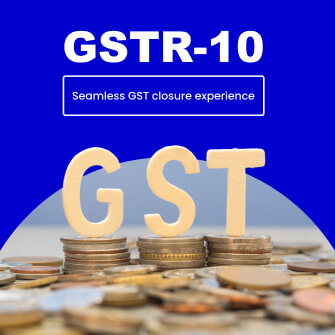
You can easily complete GSTR-10 firm registration online through Compliance Gurukul. For a sole GSTR-10 registration, only the PAN & Aadhaar card of the business owner is required. We can help you obtain the following registrations in less than 15 days:
Once, you have registered for the GSTR-10 firm registration online on Compliance Gurukul, please follow the steps below and upload the following documents by logging into Compliance Gurukul Software.
Every registered taxpayer is required to file GST returns depending upon their type of registration, turnover, and other criteria. GSTR-10 is one such document used by businesses to file their final GST return. It is used to declare the closure or cancellation of registration of a GSTIN. This document helps inform the tax authorities about the cancellation of registration of the GSTIN and the deregistration of the taxpayer.
GSTR-10 must be filed by all taxpayers who have applied for GST registration but have not been granted the same. All registered taxpayers must also file GSTR-10 if they have cancelled their registration or have been cancelled by the tax authorities.
GSTR-10 is an essential document for businesses as it helps them to declare the closure or cancellation of registration of GSTIN. It is also important for the tax authorities to keep track of the taxpayers who have cancelled or deregistered their GSTIN.
GSTR-10 must be filed within three months (90 days) of the date of cancellation or deregistration. If it is not filed within this timeframe, the taxpayer may be liable to pay the penalty. It is important to note that this GSTR 10 return cannot be filed if the registration has been cancelled due to the order of the tax authorities. In such cases, the taxpayer must file a different return known as GSTR-11.
GSTR-10 is a return that needs to be filed by a taxpayer whose GST registration has been cancelled or surrendered. Filing GSTR-10 gives taxpayers access to several advantages.
Filing GSTR-10 is a compliance requirement under GST law. Failing to file the return on time can result in paying a GSTR 10 late fees and facing legal consequences.
Filing GSTR-10 helps in the closure of the registration and avoids any future liabilities. It ensures that all the liabilities are settled before the cancellation or surrender of GST registration.
Filing GSTR-10 helps the taxpayer to claim any input tax credit that has not been claimed or reversed earlier. It is mandatory to claim the credit before filing GSTR-10.
Filing GSTR-10 on time helps maintain a sound compliance rating, which is vital for businesses in the long run.
Filing of GSTR-10 requires the following documents and details to be furnished: